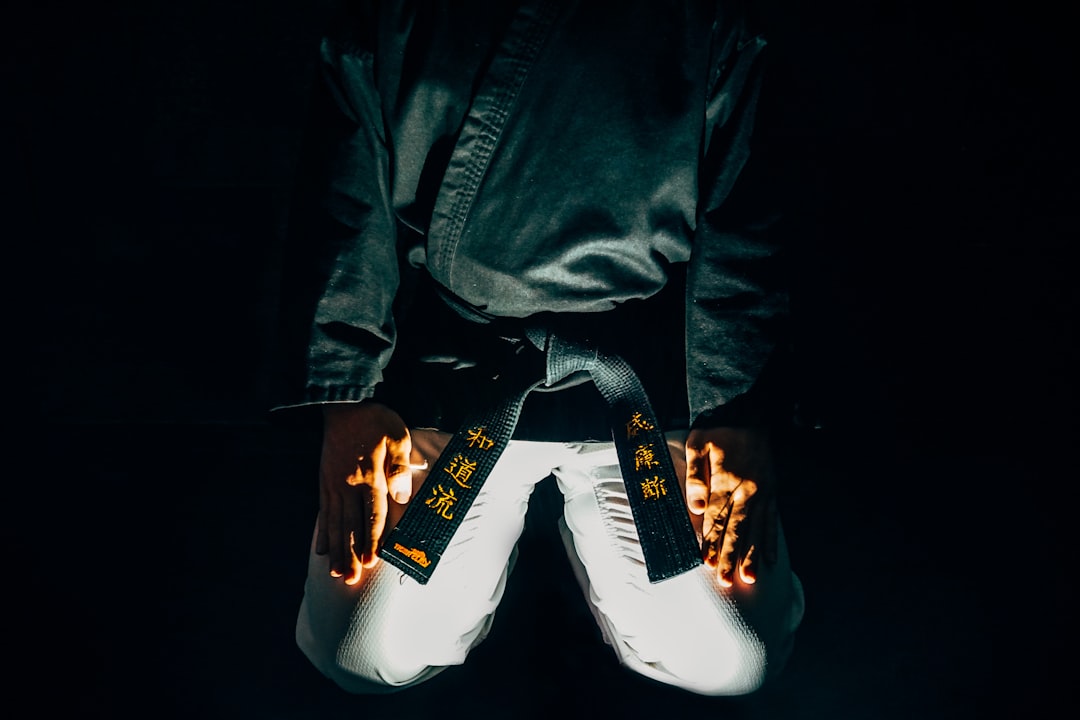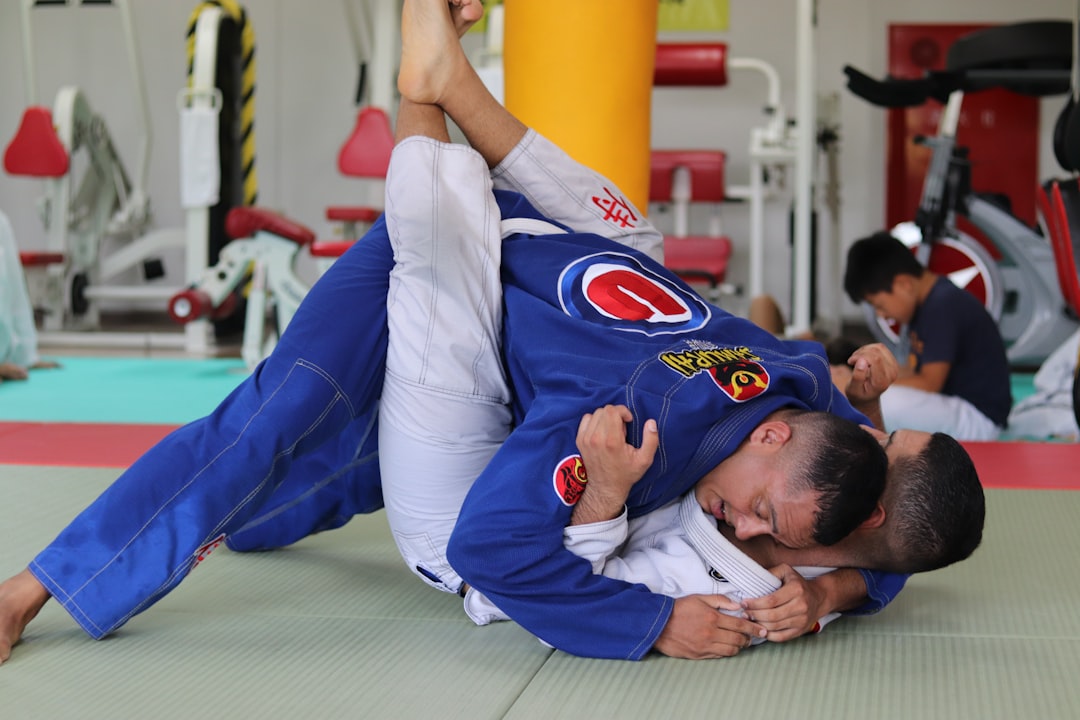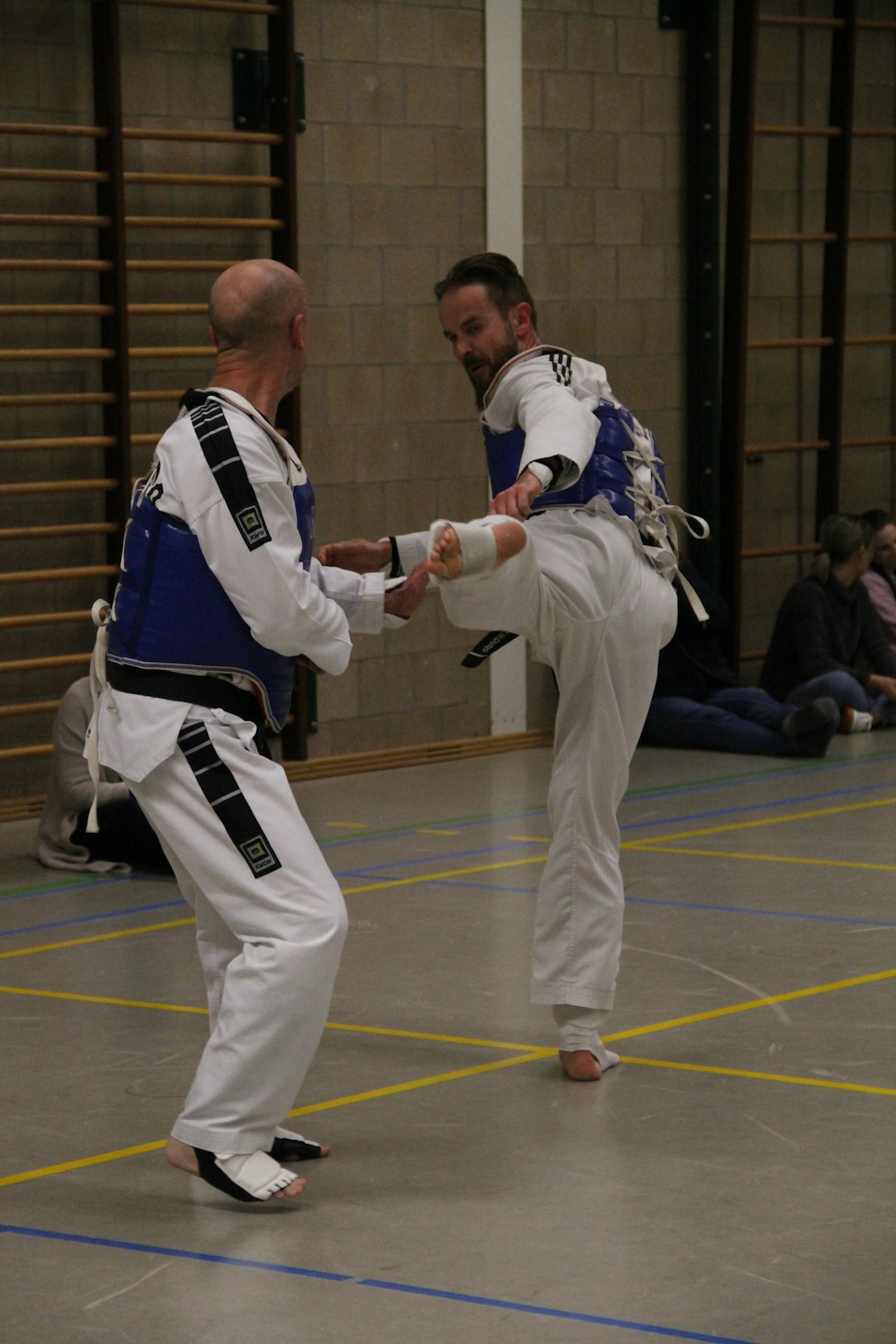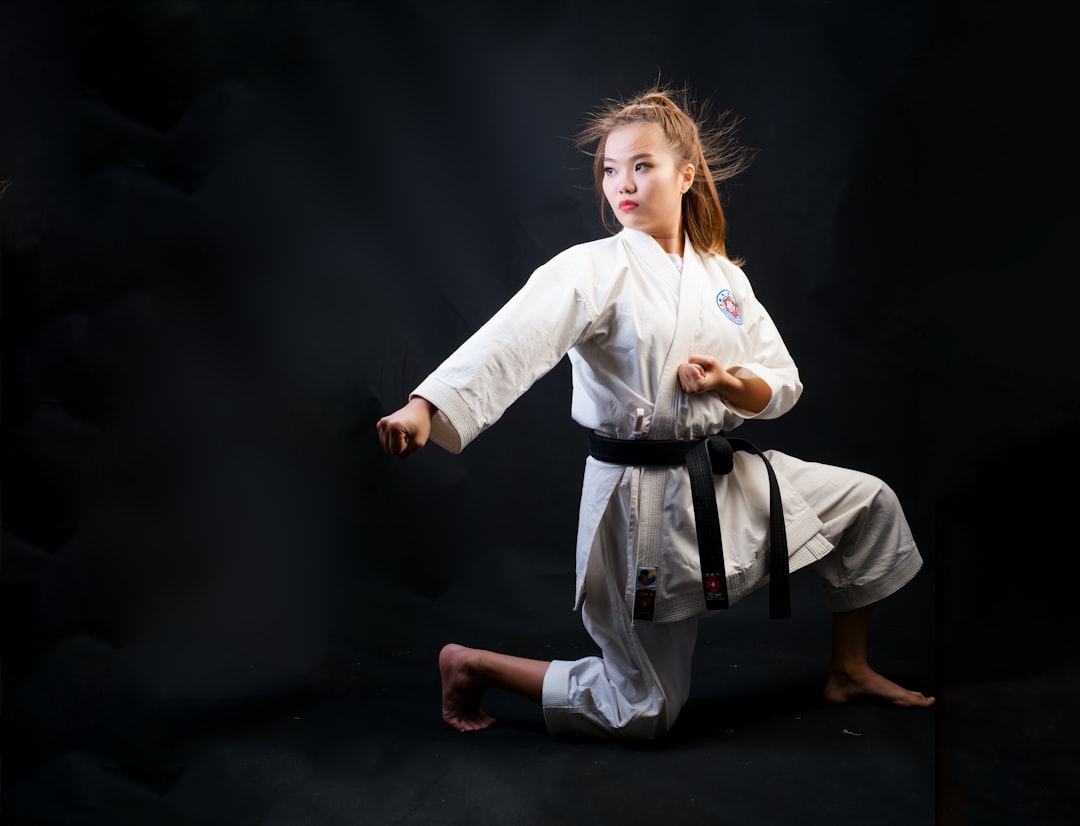The karate suit, known as the keikogi or gi, is a traditional and functional component of karate practice and competition. It consists of a jacket, trousers, and an obi, with a color-coded belt system that indicates the wearer's skill level, ranging from white for beginners to black for advanced practitioners. The gi's design evolved over time, initially resembling everyday clothing to a more durable uniform capable of withstanding martial arts training demands. Today's gi is inspired by the judo gi and traditional Japanese kimono but has been standardized for optimal functionality, featuring reinforced knees and elbows, and a tailored fit to enhance mobility. For competitions, the gi has been adapted with lighter materials and a tighter fit to improve agility and comfort, incorporating advanced technologies like moisture-wicking fabrics to maintain optimal performance conditions. The keikogi's simplicity and lack of adornments emphasize safety and focus during practice, while also upholding the discipline, respect, and tradition that karate embodies. This evolution of the karate suit reflects a harmonious blend of honoring traditional elements with embracing modern technological advancements to meet the needs of contemporary karate athletes.
Explore the traditional art of Karate through its quintessential garment, the Gi. This article delves into the essence of Karate uniforms, known as Keikogi, revealing their historical roots and design elements that make them more than mere attire but a symbol of discipline and respect in the martial arts world. From the traditional dojo to modern competition arenas, understand how this essential Karate suit has evolved and adapted to serve practitioners across various training and fighting contexts. Join us as we explore the significance, characteristics, and variations that define the Karate suit called Gi.
- Understanding the Essentials of Karate Uniforms: The Significance of the Karate Suit Called Gi
- Historical Evolution and Design Elements of the Karate Do-Gi
- Components and Characteristics Defining a Traditional Karate Suit Called Keikogi
- Modern Adaptations and Styles: Variations of the Karate Suit Called Gi in Competition and Training Settings
Understanding the Essentials of Karate Uniforms: The Significance of the Karate Suit Called Gi

When delving into the world of martial arts, one encounters a variety of attire designed to facilitate practice and competition. Among these, the karate suit, known as a “gi,” stands out for its significance in the discipline. A karate gi typically consists of a jacket, trousers, and belt, each element serving a specific function. The top, a jacket with long or short sleeves, is often made of cotton or hemp for breathability and durability during training sessions. It’s constructed to allow for a full range of motion, ensuring practitioners can execute techniques with precision and control. The trousers, similarly, are tailored to move with the body, providing comfort and allowing for unobstructed movement. Both the jacket and trousers are usually white, symbolizing purity, humility, and the blank slate that is the martial artist before they begin their journey.
The belt, or “obi,” ties at the waist and serves as a status indicator within the karate community. As a practitioner advances in skill and rank, their belt changes color, reflecting their progress. The white belt, often the first one worn, signifies a beginner. Over time, through dedication and mastery of techniques, a student may progress to higher belts like brown and black, each representing increasing levels of expertise. The gi is not merely a garment but a uniform that unites practitioners under the shared values of discipline, respect, and tradition. It’s a tangible representation of the martial artist’s commitment to karate, worn by all from novices to grandmasters.
Historical Evolution and Design Elements of the Karate Do-Gi

The traditional garment worn by practitioners of karate, known as a karate suit or do-gi, has undergone significant changes throughout its history to reflect both the practical needs of martial arts training and cultural influences. Originally, karateka, or practitioners, trained in clothing that was more common to daily wear before transitioning to a uniform that could withstand the physical demands of practice. The evolution of the do-gi is a testament to the adaptability and global spread of karate as a martial art. Initially, the do-gi was a simple white cotton garment modeled after the judo gi, which itself was inspired by the traditional Japanese kimono. Over time, the design has been standardized with features conducive to martial arts, such as reinforced knees and elbows for durability, and a snug fit to allow for ease of movement and to provide an appropriate range of motion. The do-gi is now a recognized symbol of discipline and respect in karate culture, with its simple yet functional design reflecting the essence of the martial art itself.
The modern do-gi typically consists of a jacket and pants, both of which are made from cotton or a cotton blend for comfort and breathability. The jacket is usually buttoned up to just below the chest, with fixed sleeves at a comfortable length. It also features a color-coded belt system indicating the wearer’s rank within their karate practice. The pants, known as “belted trousers,” are secured around the waist and over the shoulders with a sash, ensuring they remain in place during vigorous training sessions. The design elements of the do-gi serve not only to differentiate practitioners by skill level but also to ensure that each karateka can perform their techniques with optimal freedom and precision. What was once a simple piece of clothing has thus become an integral part of the practice, symbolizing the discipline, tradition, and respect central to the art of karate.
Components and Characteristics Defining a Traditional Karate Suit Called Keikogi

A traditional karate suit, commonly referred to as a keikogi, is a fundamental element in the practice of karate. This garment is designed to facilitate the movements required for the martial art’s techniques and forms. The keikogi typically consists of a jacket, trousers, and a belt, each with specific characteristics that distinguish it from other martial arts uniforms. The jacket, or uwagi in Japanese, is a relatively loose-fitting, unbelted jacket that reaches just above the waist. It features a V-neck and long sleeves with wide cuffs that can be rolled up for ease of movement during practice. The trousers, known as hakama-shashi, are straight-legged and fall either at or just above the ankle. They are designed to allow full range of motion without encumbering the practitioner’s movements. As for the belt, it is called Obi in its thinner form, which is used to tie the jacket closed, and the more well-known Belt, or obi, which signifies the wearer’s rank within the karate discipline. The color of the belt denotes the level of expertise and proficiency a practitioner has achieved. What differentiates the keikogi from other martial arts attire is its simplicity and functionality; it is not adorned with belts or ties that could catch on sleeves or limbs during practice, ensuring safety and focus on the art itself. Are the materials of the keikogi chosen for their durability and comfort, typically consisting of cotton or a cotton blend that allows for breathability and flexibility? Yes, indeed. The materials are selected not only for their performance characteristics but also for their ability to withstand the rigors of consistent training while providing comfort over extended periods.
Modern Adaptations and Styles: Variations of the Karate Suit Called Gi in Competition and Training Settings

In the realm of martial arts, the karate suit, commonly referred to as a gi, is a traditional attire that has undergone various modern adaptations and styles to meet the diverse needs of competition and training settings. The standard gi typically consists of a jacket, trousers, and a belt, known as obi, with specific colors denoting different ranks or levels within the karate discipline. Over time, however, manufacturers have introduced variations to the traditional design to optimize functionality and comfort for both practitioners and competitors. For instance, are the competition gis significantly different from those used in regular training? Do these variations enhance performance and comfort while maintaining the integrity of traditional karate practice? Indeed, competition gis often feature lighter materials and a tighter fit to allow for greater ease of movement and to accommodate the high-intensity nature of competitions. Additionally, certain brands may introduce innovative designs that reduce fabric bunching or incorporate moisture-wicking technologies to keep athletes cool and dry during bouts. These modern adaptations ensure that the gi remains a versatile and functional component of karate training and competition, adapting to the evolving needs of practitioners while preserving the essence of traditional karate aesthetics.
When exploring the attire of martial artists, a key element that emerges is the significance of the karate suit, known as Gi. This article has delved into the historical roots and design elements that shape the traditional Karate Do-Gi, as well as the components and characteristics that define a traditional keikogi. Furthermore, it has highlighted the modern adaptations and styles seen in competitive and training settings, where variations of the karate suit called Gi are employed to cater to different contexts. In essence, whether on the dojo floor or in the arena, the Gi remains an emblematic garment that not only unifies practitioners through tradition but also adapts to the evolving nature of the sport. Understanding the essentials of karate uniforms, from their historical tapestry to their contemporary significance, is crucial for anyone with an interest in the art of Karate and its rich cultural heritage.
